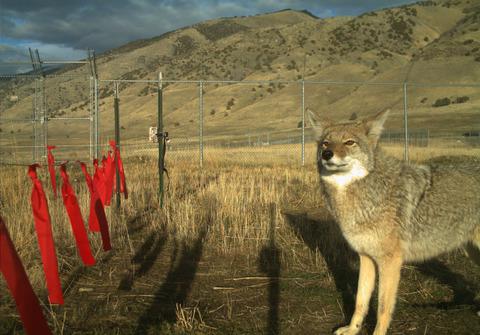当前位置:
X-MOL 学术
›
Anim. Conserv.
›
论文详情
Our official English website, www.x-mol.net, welcomes your feedback! (Note: you will need to create a separate account there.)
An applied ecology of fear framework: linking theory to conservation practice
Animal Conservation ( IF 3.4 ) Pub Date : 2020-08-12 , DOI: 10.1111/acv.12629 Kaitlyn M. Gaynor 1, 2 , Michael J. Cherry 3 , Sophie L. Gilbert 4 , Michel T. Kohl 5 , Courtney L. Larson 6 , Thomas M. Newsome 7 , Laura R. Prugh 8 , Justin P. Suraci 9 , Julie K. Young 10 , Justine A. Smith 2, 11
Animal Conservation ( IF 3.4 ) Pub Date : 2020-08-12 , DOI: 10.1111/acv.12629 Kaitlyn M. Gaynor 1, 2 , Michael J. Cherry 3 , Sophie L. Gilbert 4 , Michel T. Kohl 5 , Courtney L. Larson 6 , Thomas M. Newsome 7 , Laura R. Prugh 8 , Justin P. Suraci 9 , Julie K. Young 10 , Justine A. Smith 2, 11
Affiliation

|
Research on the ecology of fear has highlighted the importance of perceived risk from predators and humans in shaping animal behavior and physiology, with potential demographic and ecosystem-wide consequences. Despite recent conceptual advances and potential management implications of the ecology of fear, theory and conservation practices have rarely been linked. Many challenges in animal conservation may be alleviated by actively harnessing or compensating for risk perception and risk avoidance behavior in wild animal populations. Integration of the ecology of fear into conservation and management practice can contribute to the recovery of threatened populations, human–wildlife conflict mitigation, invasive species management, maintenance of sustainable harvest and species reintroduction plans. Here, we present an applied framework that links conservation interventions to desired outcomes by manipulating ecology of fear dynamics. We discuss how to reduce or amplify fear in wild animals by manipulating habitat structure, sensory stimuli, animal experience (previous exposure to risk) and food safety trade-offs to achieve management objectives. Changing the optimal decision-making of individuals in managed populations can then further conservation goals by shaping the spatiotemporal distribution of animals, changing predation rates and altering risk effects that scale up to demographic consequences. We also outline future directions for applied research on fear ecology that will better inform conservation practices. Our framework can help scientists and practitioners anticipate and mitigate unintended consequences of management decisions, and highlight new levers for multi-species conservation strategies that promote human–wildlife coexistence.
中文翻译:

恐惧框架的应用生态学:将理论与保护实践联系起来
对恐惧生态学的研究强调了来自捕食者和人类的感知风险在塑造动物行为和生理学方面的重要性,并具有潜在的人口和生态系统范围的后果。尽管最近恐惧生态的概念进步和潜在的管理影响,理论和保护实践很少联系起来。通过积极利用或补偿野生动物种群的风险感知和风险规避行为,可以缓解动物保护方面的许多挑战。将恐惧生态整合到保护和管理实践中可以促进受威胁种群的恢复、人与野生动物冲突的缓解、入侵物种管理、可持续收获和物种重新引入计划的维护。这里,我们提出了一个应用框架,通过操纵恐惧动态的生态学,将保护干预与预期结果联系起来。我们讨论如何通过操纵栖息地结构、感官刺激、动物体验(以前接触风险)和食品安全权衡来减少或放大野生动物的恐惧,以实现管理目标。改变受管理种群中个体的最佳决策,然后可以通过塑造动物的时空分布、改变捕食率和改变风险影响来进一步实现保护目标,从而扩大人口后果。我们还概述了恐惧生态学应用研究的未来方向,这将更好地为保护实践提供信息。我们的框架可以帮助科学家和从业者预测和减轻管理决策的意外后果,
更新日期:2020-08-12
中文翻译:

恐惧框架的应用生态学:将理论与保护实践联系起来
对恐惧生态学的研究强调了来自捕食者和人类的感知风险在塑造动物行为和生理学方面的重要性,并具有潜在的人口和生态系统范围的后果。尽管最近恐惧生态的概念进步和潜在的管理影响,理论和保护实践很少联系起来。通过积极利用或补偿野生动物种群的风险感知和风险规避行为,可以缓解动物保护方面的许多挑战。将恐惧生态整合到保护和管理实践中可以促进受威胁种群的恢复、人与野生动物冲突的缓解、入侵物种管理、可持续收获和物种重新引入计划的维护。这里,我们提出了一个应用框架,通过操纵恐惧动态的生态学,将保护干预与预期结果联系起来。我们讨论如何通过操纵栖息地结构、感官刺激、动物体验(以前接触风险)和食品安全权衡来减少或放大野生动物的恐惧,以实现管理目标。改变受管理种群中个体的最佳决策,然后可以通过塑造动物的时空分布、改变捕食率和改变风险影响来进一步实现保护目标,从而扩大人口后果。我们还概述了恐惧生态学应用研究的未来方向,这将更好地为保护实践提供信息。我们的框架可以帮助科学家和从业者预测和减轻管理决策的意外后果,



























 京公网安备 11010802027423号
京公网安备 11010802027423号